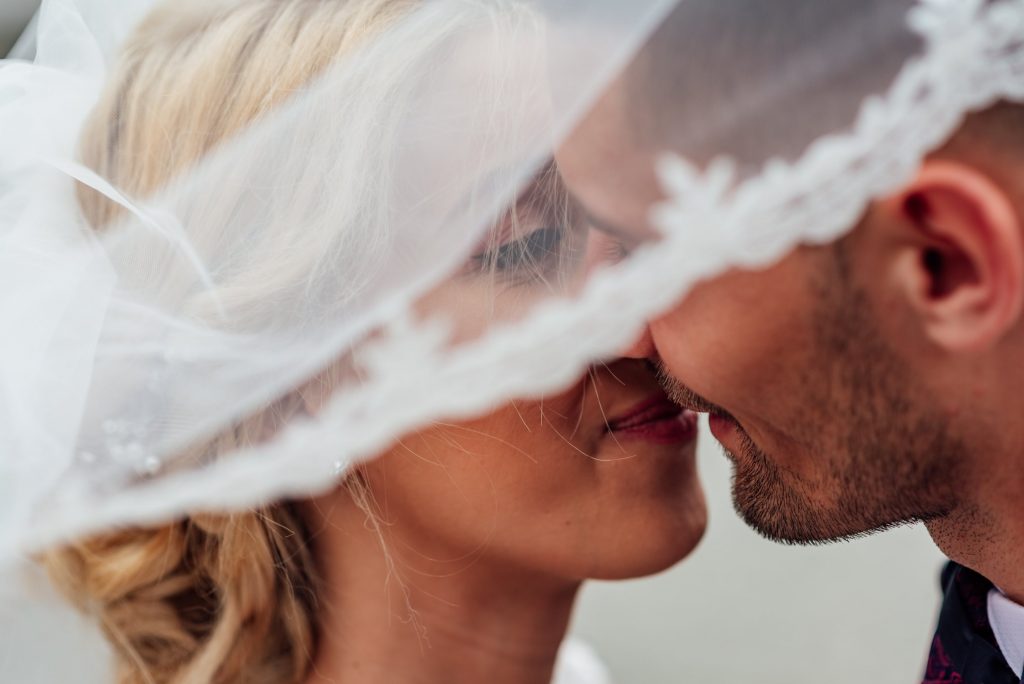While some traditions fade and others are altered, the wedding kiss has remained. A kiss after the vows is a wedding tradition that, it seems, will never disappear. Today, the wedding kiss serves as a representation of love and devotion between the couple. Historically, however, the wedding kiss had a different purpose.
Like many – if not most – traditions passed down for centuries, the history is a bit broken and unclear. As a result, there are a few origin stories of the wedding kiss.
The most commonly cited story is that of the ancient Romans (753 BC to 27 BC and then from 64 AD to 1453 AD). In ancient Rome, the wedding kiss was more of a legal formality; it symbolised a transaction that had taken place.
In those times, marriage was considered a contract and the kiss was the “signature” that rendered the contract binding. Neel Burton MD says, “In an age of widespread illiteracy, kisses served to seal agreements, thus the expression ‘to seal with a kiss.'” The kiss was also considered to be the first time that the couple ever kissed.
Others argue that the history of this significant kiss starts in the church. In ancient Catholic ceremonies, it was customary for priests to give the groom “a kiss of peace.” The groom was then required to pass the kiss on to his dearly beloved. It is said that this is how the phrase “you may now kiss the bride” came about.
Another religious argument about the origin story of this kiss comes from the scripture itself. The kiss is said to symbolise the fulfilment of the scripture that says “and the two shall become one flesh” (Mark 10:8).
Wherever it stems from, we’re pretty glad that it stood the test of time. The wedding kiss is one of the most anticipated moments of a western wedding. When celebs or royals are married, the kiss is sometimes even analysed by body language experts.
If public displays of affection are not for you though, remember that the kiss is not compulsory and your nuptials are still valid without it!
Image: Unsplash




















